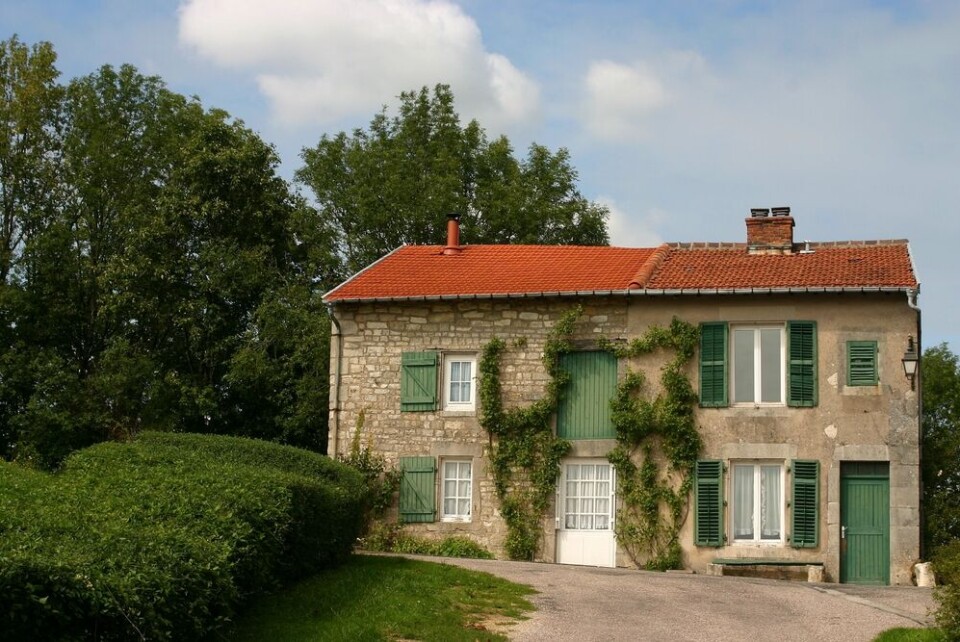-
Viager home sales rising in France as owners look to release cash
The system allows people to unlock the capital of their home
-
Buying and selling a home in France: What is the viager system?
France has an unusual way of buying and selling a home based on estimates of the seller’s life expectancy. In many cases it is the only realistic way for homeowners to release equity from their property
-
Best value heating options, renovation issues: French property updates
We also look at an app which warns of impending power cuts, the pensioner ‘conned’ into an unfair sale and a municipal chateau that locals cannot bear to get rid of
New kind of French viager property equity release is ‘less morbid’
Traditional ‘en viager’ deals allow sellers to live in their homes until they die, while buyers bet on their life expectancy

If you want to release equity from your home while still living in it, selling en viager to an investment fund could be an option to research.
This version of the en viager sale (where the buyer does not take possession until the seller has died) typically takes away much of the potentially off-putting morbid element of the traditional viager.
In this sale, there is usually no regular ‘rent’ for the seller in their lifetime, but they can expect a larger upfront sum.
And the buyer is a relatively faceless institution, not a member of the public who has essentially made a bet on your death coming sooner rather than later.
Read more: What is the viager system?
Traditional viager sales have a morbid reputation
Such institutional investors now make up half of the viager market in France, according to an industry expert.
In its classic format, a viager sale involves the buyer paying part of the market value of the property to the seller as an upfront lump sum called the bouquet, often around 30% of the value.
The seller then maintains a lifetime right to use or live in the property, while the buyer pays them a regular rent on a monthly or three-monthly basis.
The price depends on the value of the property and the life expectancy of the seller when the deal is done.
It has always had a bit of a morbid reputation, as buyers get the best deal if the seller dies quickly.
Read more: ‘Viager’ buyer accused of murdering owner to get French property early
Increased longevity means fewer people interested in buying
Traditionally, viager deals have been between members of the public, but there is growing interest from institutional investors, said Eric Guillaume, founder of Virage Viager.
“As someone working at a retirement fund, I became aware that the viager market was at best flat, in spite of the advantages it offered,” he told The Connexion.
The problem is that buyer and seller want different things – the buyer to pay as little as possible for the bouquet and to pay rent for as short a time as possible, while the seller hopes to get an advantage from their property and a monthly sum to live on.
“With the increase in longevity, there were more people who wanted to sell in a viager deal, but not many individuals who wanted to buy.
“The solution I came up with is a system where the buyers are institutional investors, not individuals.”
Larger lump sum offered by institutional buyers but no ‘rent’
For a viager mutualisé, institutional buyers usually pay a fixed sum for a property, and no ongoing rent, with the property going into funds either as capital reserves or as part of unit-based assurance vie regulated insurance savings accounts.
“If someone aged 60 has a €1million flat in Paris, and insurance tables estimate they will live for 20 years, the rental value of the property for 20 years will, for example, be assessed at €350,000,” said Mr Guillaume.
“That means an institutional buyer will pay a lump sum of €650,000 for the property, and the owner will live in it until they die.
“With a traditional viager, the €650,000 is usually divided into a lump sum of €200,000 with an estimated €450,000 in rent payments over 20 years.”
Mr Guillaume started mutualised funds in 2010, initially reserved for funds with capital reserves in property. Unit-based funds for assurance vie were introduced in 2017.
“From 2012 to 2020, an estimated €50million was in viager mutualisé,” said Mr Guillaume.
“From 2021 until now, the figure is more like €1billion.”
Read more: Releasing equity from a French property: Viager mutualisé
Institutional buyers interested in good locations
Precise figures are not available, but Mr Guillaume estimates that institutional investors now make up half of the viager market.
He warned, though, that investors are mainly interested in properties where the market is strong.
“If you have a large, beautifully restored property close to somewhere like Sarlat in Dordogne, they might be interested.
However, if you have a small, beautifully restored farmhouse miles from anywhere, in rural France, you will be much better off looking for individual investors, because the property market for that sort of house is slow.
“Similarly, if you have a flat in Biarritz, on the seafront in Nice or at Saint-Jean-de-Luz, institutional buyers will be interested straight away.”
For people looking to invest in property funds, Mr Guillaume said some insurance firms and banks now offer this.
“It is possible to have an assurance vie account with half the units in a viager property fund and half in shares,” he said.
Related articles
Married, Pacs, cohabit: your French home rights after partner’s death
























